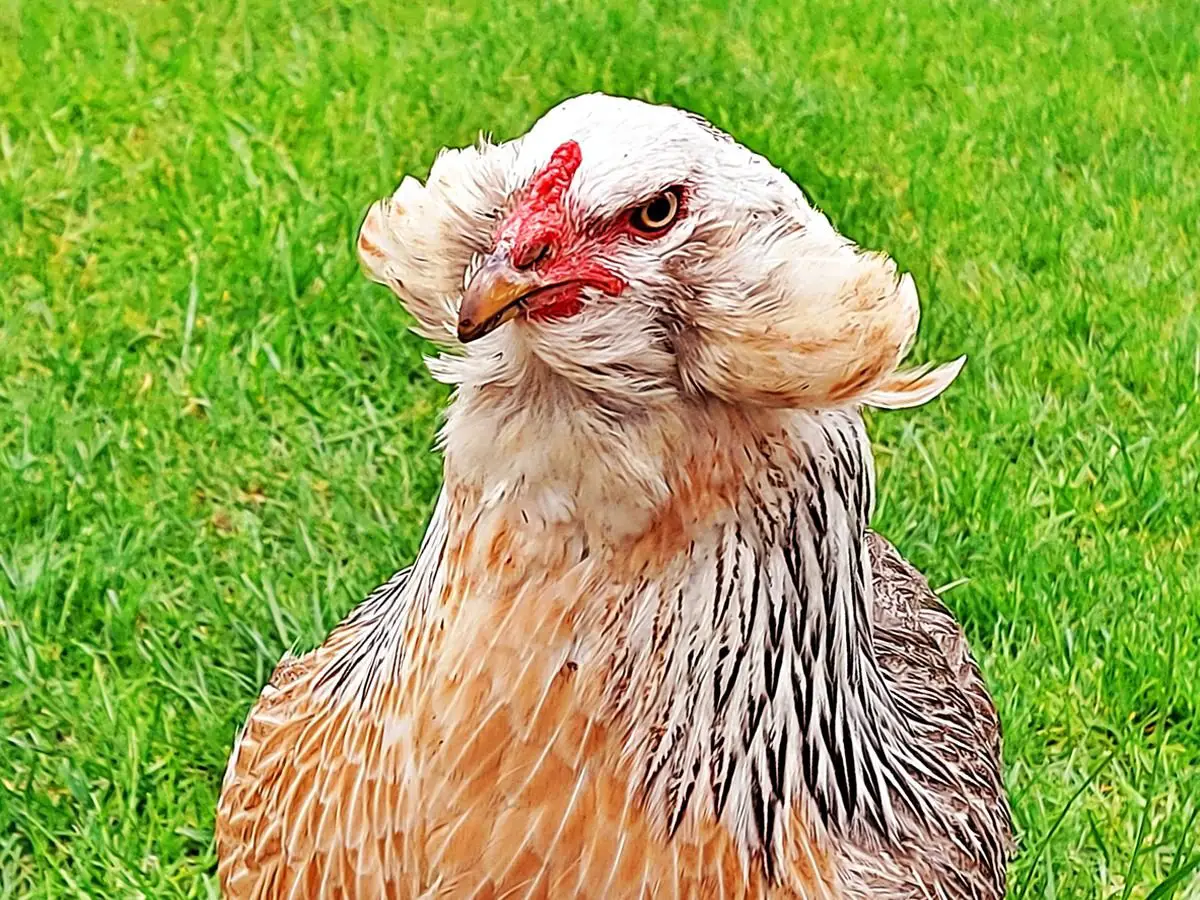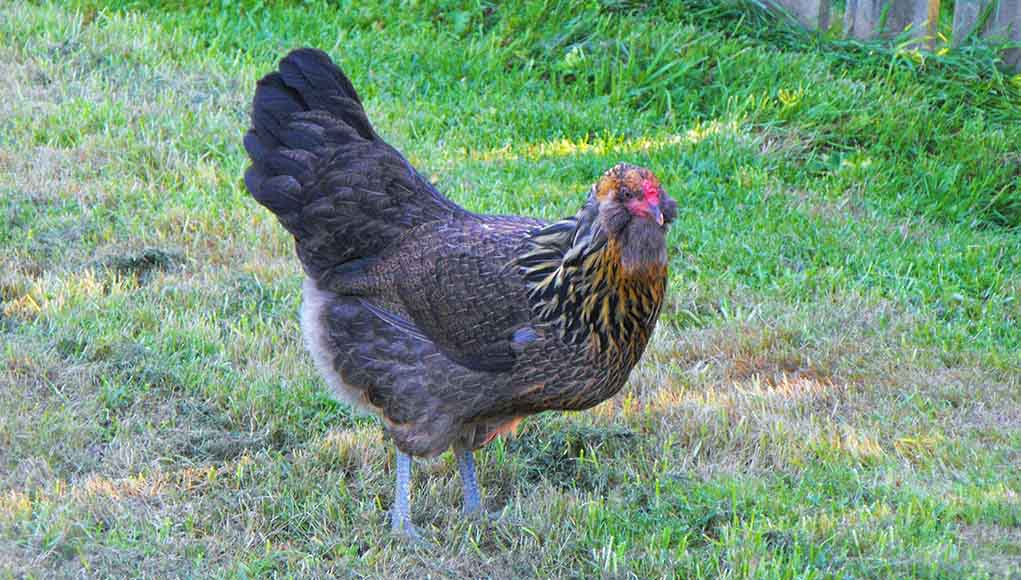Araucana Chicken: Appearance, Personality, And Care

The Araucana chicken is a unique breed that is known for its tufted ears and blue eggs. This beautiful bird has a friendly personality and is easy to care for. The Araucana chicken is an excellent choice for those who are looking for a pet chicken or want to add some beauty to their flock.
Araucana chickens are a beautiful breed that is known for their blue and green eggs. They are friendly birds that make great pets. Araucanas are also good layers, producing around 200 eggs per year.
When it comes to appearance, Araucanas have a few distinct physical traits. They have tufts of feathers on their ears, and they often have 5 toes instead of the usual 4. These chickens come in a variety of colors, including black, white, and blue.
Personality-wise, Araucanas are gentle birds that get along well with other animals and people. They are curious creatures that like to explore their surroundings. Araucanas typically live for about 10 years.
As far as care goes, Araucanas don’t require any special treatment. They do best in warm climates and should have access to plenty of fresh water and food. These chickens are relatively low-maintenance pets overall.
Araucana Chickens: All You Need to Know About Them
Araucana Chicken Origin
The Araucana chicken is a breed of chicken that originated in Chile. The Araucana was originally developed by Dr. Rene de Roulhac de la Fresnaye, who used two other South American breeds, the Collonca and the Quetro, to create the Araucana. The Araucana is best known for its blue eggs, which are a result of a genetic mutation.
The Araucana is a popular breed of chicken in the United States, and it is also common in Europe and Australia. The Araucana is considered to be a dual-purpose breed, meaning that it can be used for both meat and egg production. The Araucana is a relatively small breed of chicken, with hens weighing between four and five pounds, and roosters weighing between six and seven pounds.
The Araucana has several distinctive physical characteristics, including tufts of feathers on its head (known as “ear tufts”), which are unique among chickens. The ear tufts are thought to help protect the Araucana’s ears from cold weather or predators. The Araucana also has wattles (hanging fleshy growths) on its neck, but these are usually removed before the bird reaches maturity.
Blue Araucana Chicken
The Araucana chicken is a breed of chicken that originates from South America. The breed was developed in the early 20th century by Dr. Rene d’Estrampes, who was trying to create a chicken that would lay blue eggs. The Araucana chicken is known for its distinctive appearance, which includes tufts of feathers on its head and ears that resemble those of a rabbit.
The breed is also known for being good egg-layers, and for being resistant to disease.
Araucana Chicken Egg Production
If you’re looking for an egg-laying machine, the Araucana chicken is sure to please! This breed can lay up to 280 eggs per year, with each egg being a beautiful blue hue.
But what makes the Araucana chicken so special?
For starters, this breed is one of the oldest in existence and hails from Chile. The Araucana was actually brought over to North America in the 1920s by Mrs. Ethelreda Lewis, who obtained them from South America.
The Araucana chicken is known for its tufted ears, which are a result of a genetic mutation.
These chickens are also rumpless, meaning they don’t have tail feathers. And as if that wasn’t enough, they also lay blue eggs!
So why not add an Araucana chicken to your flock?
You’ll be getting plenty of gorgeous eggs in return!
Araucana Chicken Egg Color
Araucana chicken eggs are a unique and beautiful blue color. These chickens are originally from South America, and their egg color is the result of a genetic mutation. While the Araucana chicken is not the only breed of chicken that lays blue eggs, it is one of the most popular.
The blue hue of Araucana chicken eggs is caused by protoporphyrin IX, which is a pigment found in the eggshell. This pigment is not present in other chicken breeds’ eggshells. The amount of protoporphyrin IX in an Araucana chicken’s eggshell can vary, resulting in different shades of blue.
Araucana chickens are known for being friendly and docile birds. They make great backyard pets and are good layers, producing around 200 eggs per year on average. If you’re looking for a unique addition to your flock, consider getting an Araucana chicken!

Credit: www.thehappychickencoop.com
What Does Araucana Chickens Look Like?
The Araucana chicken is a South American breed that was developed in Chile. It is known for its blue eggs and distinctive tufts of feathers on its head. The Araucana chicken is a medium-sized bird with a long body and neck.
Its plumage is mostly black, with some white markings on the wings and tail. The Araucana chicken has two different types of tufts: the ear-tufts, which are long, thin feathers that protrude from the sides of the head; and the beard-tufts, which are shorter, thicker feathers that grow under the chin. Both types of tufts are unique to this breed of chicken.
Are Araucana Chickens Friendly?
Araucana chickens are a breed of chicken known for their friendly disposition. Unlike many other breeds of chickens, Araucanas are not aggressive and are known to be good with children. They are also known to be curious and inquisitive, which can make them fun pets.
While they do not lay as many eggs as some other breeds of chickens, their eggs are a beautiful blue color. If you are looking for a friendly breed of chicken to add to your flock, the Araucana is a great choice!
What Breed of Chicken Has the Best Personality?
There are many different chicken breeds and each one has its own personality. Some people prefer the docile and friendly nature of breeds like the Rhode Island Red, while others prefer the playful and curious nature of breeds like the Orpington. Ultimately, it depends on your personal preferences as to what breed of chicken has the best personality.
What is the average lifespan of an Araucana chicken?
The average lifespan of an Araucana chicken is about 7 to 8 years. These unique birds are known for their vibrant blue eggs, which have become quite popular among poultry enthusiasts. When raising Araucana chickens, proper care is essential to ensure their well-being and maximize egg production. By providing a balanced diet, a clean and comfortable living environment, and regular health check-ups, owners can enjoy the beauty of araucana chicken eggs and care for their feathered friends.
What Does a Blue Ameraucana Chicken Look Like?
There are several different types of blue Ameraucana chickens, but they all share some common characteristics. They have blue feathers and a white breast, and they are usually smaller than other chicken breeds. Ameraucana chickens are known for their friendly personality and hardy nature.
What Are the Main Differences Between Swedish Flower Hens and Araucana Chickens in Terms of Appearance, Temperament, and Care?
Swedish flower hen characteristics greatly differ from those of Araucana chickens. In terms of appearance, Swedish Flower Hens have varied patterns and colors, while Araucanas are known for their distinctive blue eggs. Temperament-wise, Swedish Flower Hens tend to be calmer and more docile, whereas Araucanas can be more spirited. Regarding care, both breeds require similar attention and conditions with regards to feeding, shelter, and health management.
Conclusion
The Araucana chicken is a breed of chicken that is known for its unique appearance. The most notable feature of this breed is its blue eggs. Araucana chickens are also characterized by their tufts of feathers on their head, which give them a distinctive look.
These birds are not only beautiful to look at but they also have pleasant personalities. They are known to be docile and easy to handle, making them a great choice for those who are new to keeping chickens. When it comes to care, Araucana chickens are relatively low-maintenance.
They are hardy birds that can tolerate cold weather and do not require much in the way of special care.